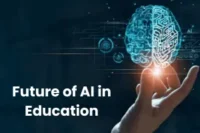Types of Artificial Intelligence: A Complete Guide (ANI to ASI + Emerging AI)
Published: 10 Oct 2025
Artificial intelligence (AI) is no longer only a theme in science fiction films; it is an important element of our daily lives. AI is transforming how we live, work, and communicate, with smart assistants such as Siri and Alexa, self-driving cars, and improved medical technologies.
But were you aware that not every AI is the same? Experts categorize AI depending on its strength and capabilities. Some AI systems are basic and task-oriented, while others are programmed to think, learn, and even make decisions like people. Scientists are continually developing future AI concepts.
In this article, we’ll look at the many types of Artificial Intelligence [AI], from simple machines to complex models and future possibilities. You will also discover how AI is grouped into capabilities (what it can do) and functions (how it operates). By the conclusion, you’ll have a solid knowledge of how AI is evolving and why these categories are important for the future of technology.
Classification Based on Capabilities
When we talk about AI, one approach to categorizing it is by its capabilities—what the AI system can accomplish. Based on this, AI is typically classified into three major types:
1. Artificial Narrow Intelligence (ANI) – Weak AI
Artificial Narrow Intelligence is the most prevalent type of AI used today. It is intended to accomplish one single duty exceptionally effectively. However, it is limited to that duty.
Example: Voice assistants include Siri, Alexa, and Google Assistant. Netflix and YouTube provide recommendation algorithms. Spam filters for email.
Key Point: ANI is effective in its specific field but lacks comprehension outside of it.
2. Artificial General Intelligence (AGI) – Strong AI
AI General Intelligence is a more sophisticated idea. Artificial general intelligence would enable a computer to think, learn, and make decisions in the same way as humans do. It could transition between activities, recognize difficulties, and solve them without being programmed for each action.
Examples: Still theoretical. No present AI system is fully AGI, but research is underway.
Key Point: If successful, AGI might rival or even outperform human intellect in a variety of domains.
3. Artificial Superintelligence (ASI)
Artificial superintelligence is a step above AGI. It is the concept of AI becoming smarter than humans in every manner, including problem-solving, making decisions, creativity, and emotion.
Example: This is a futuristic idea that does not yet exist. Movies like Ex Machina and Her depict what ASI may look like.
Key Point: ASI may provide tremendous potential but also major concerns, such as loss of human control.
Classification Based on Functionalities
Another method to classify AI is to consider its functionalities—how the system operates and responds to input. Based on this, AI is classified into four major categories:
1. Reactive Machines
Reactive machines are the most basic kind of AI. They do not retain previous facts or learn from experience. They just respond to the circumstances in front of them.
Example: IBM’s Deep Blue chess computer, which defeated Garry Kasparov in 1997.
Key Point: Excellent at completing a specific activity, but lacks memory and learning abilities.
2. Limited Memory AI
This type of AI can look at past data for a short time and use it to make better decisions. Most AI systems we use today fall into this category.
Examples: Self-driving cars (they analyze speed, direction, and traffic data). Chatbots and virtual assistants.
Key Point: Learns from limited historical data, but still does not improve itself permanently.
3. Theory of Mind AI
This is a more sophisticated type of AI that is still in the research phase. AI based on the Theory of Mind would be capable of comprehending human emotions, ideas, and intentions.
Examples: Although not yet accessible, scientists are developing social robots and powerful AI helpers that can interact with people.
Key Point: Designed to sense emotions and behave in a humanlike manner.
4. Self-Aware AI
This is the most advanced and future type of AI. Self-aware AI would be conscious and emotional. It would comprehend humans and be aware of itself.
Example: Science fiction. Seen in movies such as Terminator and Her.
Key Point: They may grow more intelligent than humans, presenting both potential and threats.
Emerging Hybrid and Applied AI Types
Apart from the usual classifications, academics and corporations are already exploring fresh types of AI that blend diverse methodologies or focus on real-world applications. These are shaping the next iteration of AI.
1. Generative AI
Generative AI is a new form of artificial intelligence that focuses on producing new material. It learns patterns from existing data and then applies that information to create text, pictures, music, and movies. This sort of AI is well-known now since it enables robots to do more than just analyze data and create something unique.
2. Neuro-Symbolic AI
Neuro-Symbolic AI combines two techniques of artificial intelligence: neural networks and symbolic thinking. Neural networks excel at learning from enormous volumes of data, whereas symbolic reasoning aids in logic and organized problem-solving. By combining the two, Neuro-Symbolic AI improves its reliability and performance in complicated tasks that need both learning and logical decision-making.
3. Blended or Hybrid AI
Blended AI, also known as Hybrid AI, combines different AI approaches rather than depending on a single one. For example, it might integrate machine learning with natural language processing or computer vision to create more powerful systems. This technique contributes to AI that is more precise, adaptable, and capable of handling a variety of issues.
4. Applied AI
Applied AI describes artificial intelligence systems that are tailored to certain industries or activities. Applied AI, unlike broad AI principles, focuses on practical applications such as healthcare, education, economics, and retail. It demonstrates how AI is being created not simply for research but also to address real-world problems in everyday life.
Why AI Types Matter for Everyone
Knowing the various types of AI is vital because it allows us to learn how this technology is influencing our environment. These categories demonstrate what AI can accomplish today, what is currently being developed, and what may be available in the future. Learning about them allows individuals to see how AI is utilized in everyday life, from simple tools to powerful systems. It also assists students, professionals, and daily users in preparing for new developments and making smarter judgments while utilizing AI.
Conclusion
Artificial intelligence is rapidly evolving, and comprehending its many varieties allows us to appreciate both its current applications and future potential. From narrow AI that assists us with everyday tasks to higher notions such as AGI and Superintelligence, each category shows how technology is advancing. As AI continues to change our lives, it is critical to be aware and prepared for what lies ahead. If you found this tutorial useful, please share it with others and continue to learn more about AI. The future of technology belongs to those who understand it now.
Frequently Asked Questions [FAQs]
AI is a topic that frequently generates issues, particularly about its many forms and applications. The following are some of the most often asked questions concerning artificial intelligence, along with their obvious solutions:
The four main types of AI, based on functionalities, are Reactive Machines, Limited Memory, Theory of Mind, and Self-Aware AI.
Yes, ChatGPT is a type of Generative AI because it creates new text responses by learning from large amounts of data.
John McCarthy is known as the father of AI. He first coined the term “Artificial Intelligence” in 1956.
AGI, or Artificial General Intelligence, is the idea of AI that can think and work like a human. ASI, or Artificial Superintelligence, goes beyond human intelligence and is still a future concept.
Generative AI is a type of current artificial intelligence that learns from enormous volumes of data to produce new material such as text, photos, music, or movies.

- Be Respectful
- Stay Relevant
- Stay Positive
- True Feedback
- Encourage Discussion
- Avoid Spamming
- No Fake News
- Don't Copy-Paste
- No Personal Attacks

- Be Respectful
- Stay Relevant
- Stay Positive
- True Feedback
- Encourage Discussion
- Avoid Spamming
- No Fake News
- Don't Copy-Paste
- No Personal Attacks





